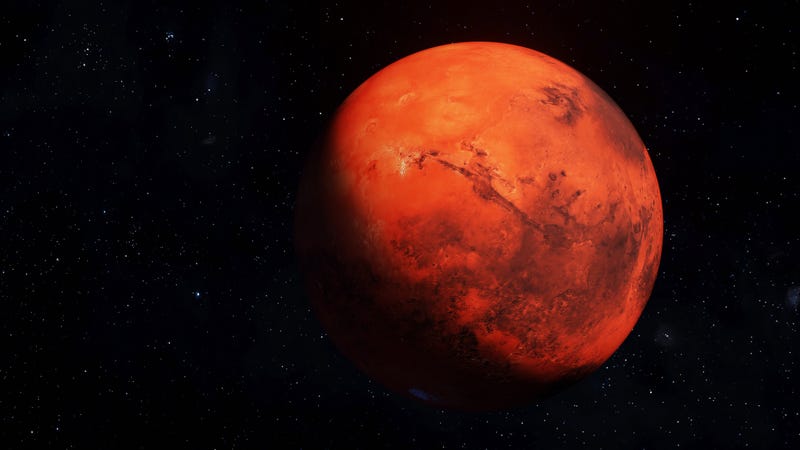
Four new NASA volunteers are doing their bit to get astronauts ready to go to Mars.
They're living in a 1,700 square foot simulated Mars habitat at the Johnson Space Center and won't come for a little over a year. The mission is 378 days to be exact and they began Sunday.
The 3D printed habitat includes a 1,200 square foot sandbox. Everything has reddish brown walls to make it look like it's made with Martian dirt.
NASA Director of Engineering Julie Kramer White says this project actually started in 2019.
Judy Hayes, NASA chief science officer of health and human performance says this embodies teamwork. "This team is the best that NASA offers. They are about to embark on a mission that encompasses operations, logistics and research of living and working on Mars. The importance of this study cannot be understated. As their journey unfolds, it's through this stellar crew that NASA scientists will learn critical insights on the physical and behavioral aspects of a mission on Mars."
Chief Engineer Julie Kramer White notes some have provided airlocks and laundry and trash management. What they learn about storage and volume and mass will help them as they think about missions to Mars. "These long duration mission simulations really bring Mars closer to us and help us realize Mars is within our reach."
This is the first of three planned one year Mars simulations.
The four crew members are Anca Selariu, a microbiologist, Ross Brockwell, a structural engineer, Kelly Haston, a research scientist, and Nathan Jones, an emergency room physician.
Int he contained habitat they will eat shelf-stable food. Their shower time, due to water rationing, will be limited. They will exercise daily and communications with loved ones will be delayed, perhaps glitchy and possibly infrequent. Communication lags would be about 22 minutes each way. The crew members said what they're most worried about is isolation from friends and family. Jones broke down while addressing his family before he entered the habitat. "To my wife and kids, I love you to the moon and Mars and back."
The crew is being paid $10 an hour for all waking hours, or about $160 dollars a day.
LISTEN on the Audacy App
Tell your Smart Speaker to "PLAY 1080 KRLD"
Sign Up to receive our KRLD Insider Newsletter for more news

